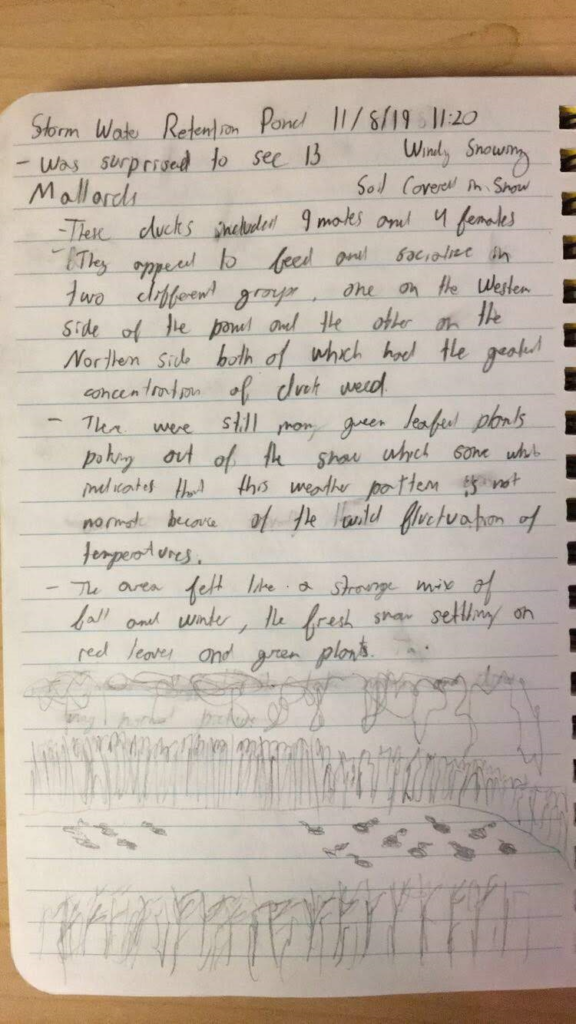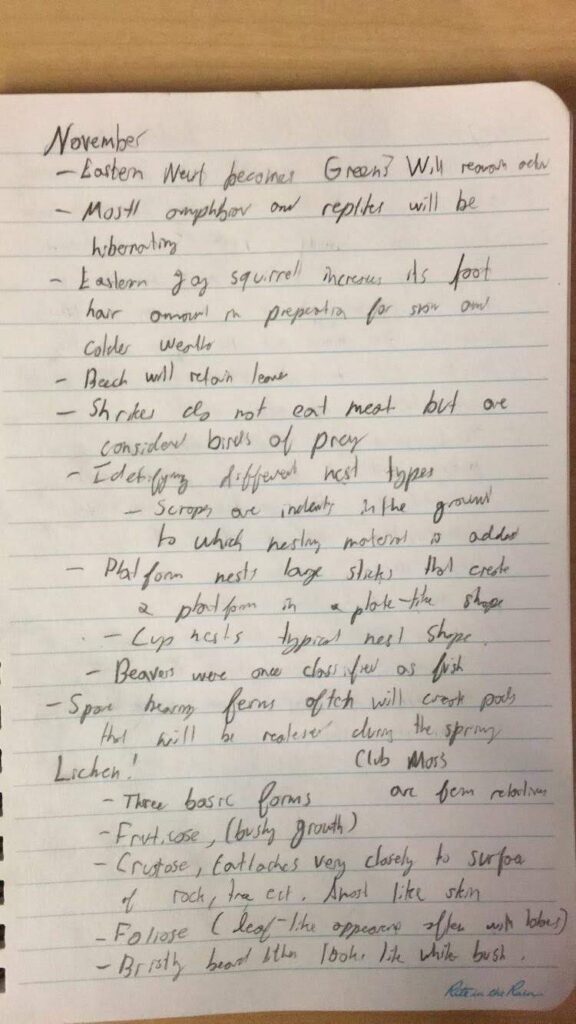Upon my more recent visit to my phenology area, I observed a dramatic transformation. Within a day the area went form the bright colors and green banks of fall to a snow-covered scene. It must have been even more of a shock to the green plants that were on the ground then to myself. The area that was so vibrant and lively with birdlife that the change to a white and snowy landscape changed my perspective of the area. I was even surprised to see thirteen mallard ducks floating along the pond. The snow-covered landscape looked so different from its first appearance in early fall that I was reminded that this site likely experienced dramatic historic changes. It likely didn’t even exist even a couple of decades ago. I assume that this site was man-made but I was unable to find any information on the previous site if in case it was at one point a pond or wetland. Looking at the slant of the landscape I imagine that water would naturally flow through the area either leading to a pond or would later feed into the nearby Centennial brook.

Although it may be strange to have chosen a site for phenology that is essentially unnatural due to its a human construction. As I mentioned in a previous post, part of why I was so attracted to this area because it is an attempt for humans to have a healthy interaction with the environment. The space feels like nature is actively recalling the area which reminds me of my hometown, South Bend Indiana. South Bend is a small city surrounded by corn and soybean fields. There are very few untouched or natural spaces, however, there are countless spaces that are slowly being reclaimed by nature and you can see natural succession in action. I feel that since I was brought spaces like this I naturally gravitate to them.

Spaces like these are either examples of how humans and the environment can coexist or how they can fail to coexist. As time progresses, we would hope that so too would our positive relationship with the environment. The stormwater retention pond is a clear example at an attempt to do so and thinking of the greater Burlington and the issue of algal blooms, systems like the pond are essential for managing nutrient runoff.

Above can be seen several pages of notes from the book Naturally Curious on the fall seasons


